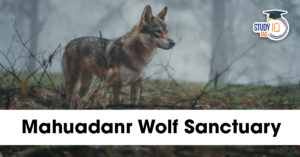Current Affairs 17th August 2023 for UPSC Prelims Exam
Metagenomics
Context: The scientific community from the Nigerian Centre for Disease Control conducted a study utilizing metagenomic sequencing for pathogen surveillance.
About Metagenomics:
- Metagenomics is the study of microbes in their natural living environment, which involves the complex microbial communities in which they usually exist.
- The study examines the genomic composition of an entire organism, including each of the microbes that exist within it. It facilitates direct sequencing of patient samples, removing the need for prior knowledge of the infectious agent.
- It refers to the application of sequencing techniques to analyse the totality of the genomic material (DNA or RNA) present in a sample.
- It is different from conventional sequencing methods, which requires culturing or isolating individual species before sequencing their genomes.
- Metagenomics uses gene sequencing to discover proteins in samples from environments across Earth, microbes living in the soil, in extreme environments like hydrothermal vents, deep in the oceans and in our guts and on the skin.
- It enables us to understand the diversity, abundance, and interaction of microbes in any system.
Genome Sequencing:
- Genome sequencing is figuring out the order of DNA nucleotides, or bases, in a genome—the order of Adenine, Cytosine, Guanines, and Thymine that make up an organism’s DNA.
- While the sequence or order of base pairs is identical in all humans, compared to that of a mouse or another species, there are differences in the genome of every human being that make them unique.
Genome:
- A genome is all of the genetic material in an organism.
- It is made of DNA (or RNA in some viruses) and includes genes and other elements that control the activity of those genes.
- Genome v/s Gene: Genome is the entire set of genetic material or DNA, while gene is a specific segment of DNA that codes for a particular protein or RNA molecule.
- Human genome:
- The human genome is the entire set of deoxyribonucleic acid (DNA) residing in the nucleus of every cell of each human body.
- The DNA consists of a double-stranded molecule built up by four bases – adenine (A), cytosine (C), guanine (G) and thymine (T). Every base on one strand pairs with a complementary base on the other strand (A with T and C with G).
- In all, the genome is made up of approximately 3.05 billion such base pairs.
Applications of Metagenomics:
- Microbiome Exploration: Uncovering the structure and functional roles of microbial communities in diverse environments like the human gut, soil, oceans, and plants. This knowledge has broad implications for health, agriculture, and ecological understanding.
- Biotechnology Advancement: Detecting novel enzymes, pathways, and metabolic functions within environmental samples, with potential applications in industrial processes such as bioremediation, biofuel production, and the synthesis of valuable compounds.
- Disease Insight: Probing the involvement of microbial communities in human health and diseases. Metagenomics aids in pinpointing potential pathogens, studying the human microbiome, and comprehending the impact of microbial imbalances on health conditions.
- Environmental Surveillance: Gauging the effects of pollution, climate shifts, and other environmental factors on microbial ecosystems.
- Pharmaceutical Discovery: Investigating natural products and bioactive substances generated by diverse environmental microorganisms, offering prospects for potential drug development.
- Agriculture and Food Security: Analyzing the microbiota of crops, livestock, and food items to enhance agricultural techniques, amplify crop production, and ensure the safety of consumables.
PM e-bus Sewa scheme
Context: The Union cabinet approved the PM e-bus Sewa scheme.
About the PM e-bus Sewa scheme
- Under the Scheme, 10,000 e-buses will be deployed across cities in the country.
- An e-bus is any bus whose propulsion and accessory systems are powered exclusively by a zero-emissions electricity source.
- Aim: The scheme aims to enhance urban infrastructure through green mobility initiatives.
- Beneficiaries: The scheme will cover cities of 3 lakh and above population and priority will be given to cities not having organised bus services.
- Out lay: The scheme will have an estimated cost of ₹57,613 crore spent over 10 years, of which the Centre will provide ₹20,000 crore and the remaining will be borne by the States.
- Two segments of the scheme:
| Augmenting the city bus services | Green Urban Mobility initiatives |
|
|
Deemed Forests
Context: The Odisha government has withdrawn a controversial order which stated that the concept of “deemed forest” has been removed in accordance with the amended Forest Conservation Act, 2023.
What are ‘Deemed Forests’?
- ‘Deemed forests’ are forests that aren’t classified so, by the Centre or States, in their records.
- However, a 1996 judgment of the Supreme Court in the Godavarman case entrusted States with identifying parcels of land “that conformed to the dictionary meaning of forest…irrespective of ownership” and expanding protections available under the Forest Act, 1980 to them too.
What does the Forest (Conservation) Amendment Bill, 2023 say about deemed forests?
- The recently passed Forest (Conservation) Amendment Bill, 2023 stipulates that only forests that have been officially classified and documented as such after the year 1980 will receive protection.
- Forested areas that were formally repurposed by the government for non-forestry activities between 1980 and 1996 will not fall under protection either.
- However, the Ministry of Environment has clarified that these revisions do not contravene the Supreme Court’s 1996 judgment.
- The Ministry stated that regions of forest land, including those designated as “deemed forest lands,” will also be subject to the provisions outlined in the Act.
Key highlights of the Forest (Conservation) Amendment Bill, 2023
- Land under the purview of the Act: The Bill amends the Forest (Conservation) Act, 1980 to make it applicable to certain types of land. These include land notified as a forest under the Indian Forest Act, 1927 or in government records after the 1980 Act came into effect. The Act will not be applicable for land converted to non-forest use before December 12, 1996.
- Exempted categories of land: It also exempts certain types of land from the purview of the Act. These include land within 100 km of India’s border needed for national security projects, small roadside amenities, and public roads leading to a habitation.
- Assignment/leasing of forest land: The state government requires prior approval of the central government to assign any forest land to a private entity. The Bill extends this to all entities, and allows the assignment to be made on terms and conditions specified by the central government.
- Permitted activities in forest land: The Act specifies some activities that can be carried out in forests, such as establishing check posts, fencing, and bridges. The Bill also allows running zoos, safaris and eco-tourism facilities.
International Organization for Migration
Context: As per the International Organisation for Migration (IOM), more than 60 people are believed to have died after a migrant boat from Senegal was found off West Africa’s Cape Verde islands.
About the IOM:
- The International Organization for Migration (IOM), formerly known as the Provisional Intergovernmental Committee for the Movement of Migrants from Europe (PICMME), was established in 1951 out of the chaos and displacement of Western Europe following the Second World War.
- It was mandated to help European governments to identify resettlement countries for the estimated 11 million people uprooted by the war.
- IOM is part of the United Nations System as the leading inter-governmental organization promoting since 1951 humane and orderly migration for the benefit of all.
- Mission and Objectives:
- IOM) has a mission to promote humane and orderly migration for the benefit of migrants and society.
- Its core objectives include providing assistance and support to migrants, responding effectively to the changing dynamics of migration, offering advice on migration policy and practice, building resilience among people on the move, especially those in vulnerable situations, and enhancing governments’ capacity to manage various forms and impacts of mobility.
- IOM is guided by the principles enshrined in the Charter of the United Nations, including upholding human rights for all individuals, including migrants.
- The organization’s work is centered around various core frameworks, such as the 12-point strategy, the Migration Governance Framework (MiGOF), and a five-year Strategic Vision. These frameworks help shape IOM’s approach to migration governance and its efforts to address the challenges and opportunities presented by global migration trends.
- It is headquartered at Geneva, Switzerland and World Migration Report is its key publication.
- Membership: IOM has a membership 175 member states 8 observers and is present in over 100 countries.
- India is a member of IOM.


 Punjab Police Constable Exam Date 2025 A...
Punjab Police Constable Exam Date 2025 A...
 Punjab Police Constable Admit Card 2025 ...
Punjab Police Constable Admit Card 2025 ...
 Mahuadanr Wolf Sanctuary: India’s Firs...
Mahuadanr Wolf Sanctuary: India’s Firs...





















